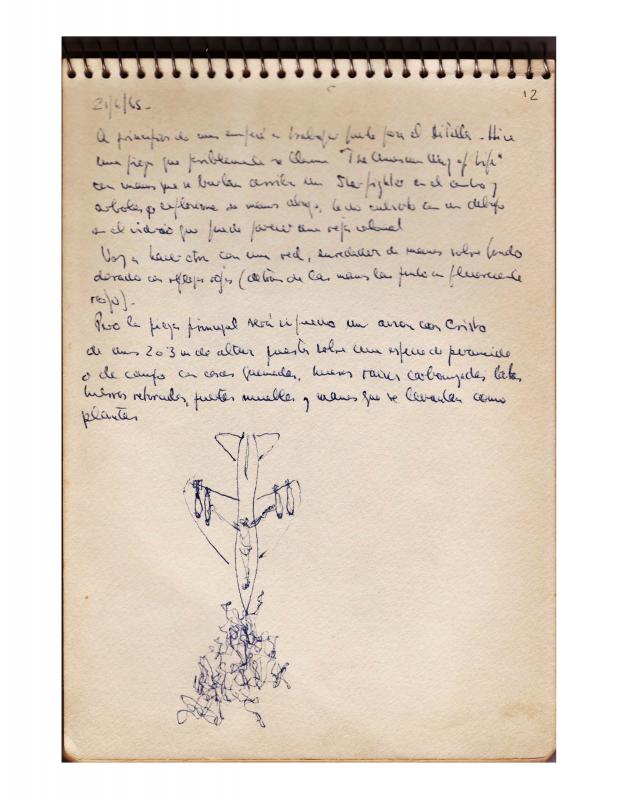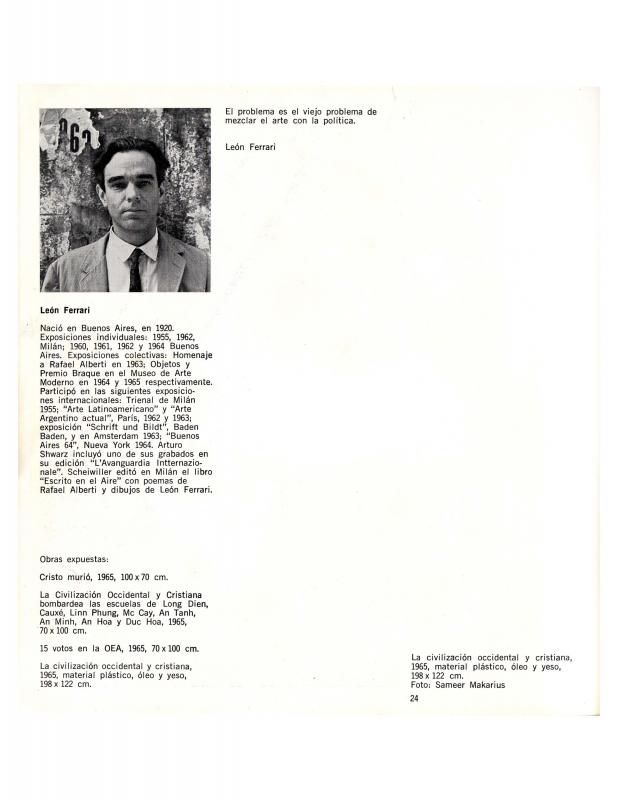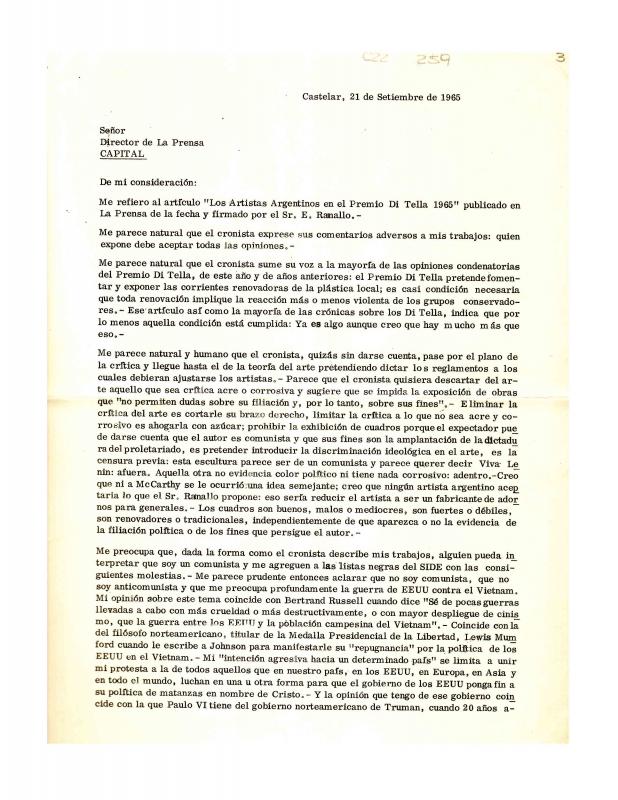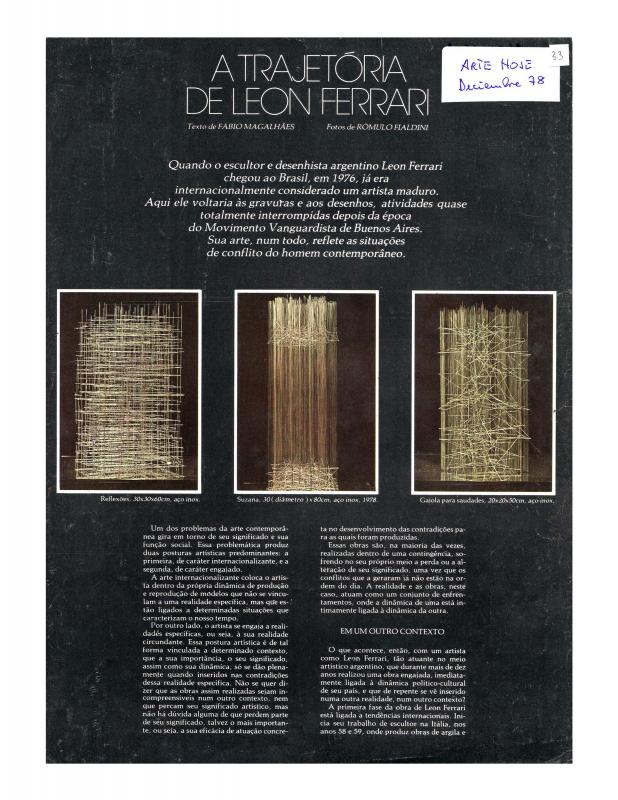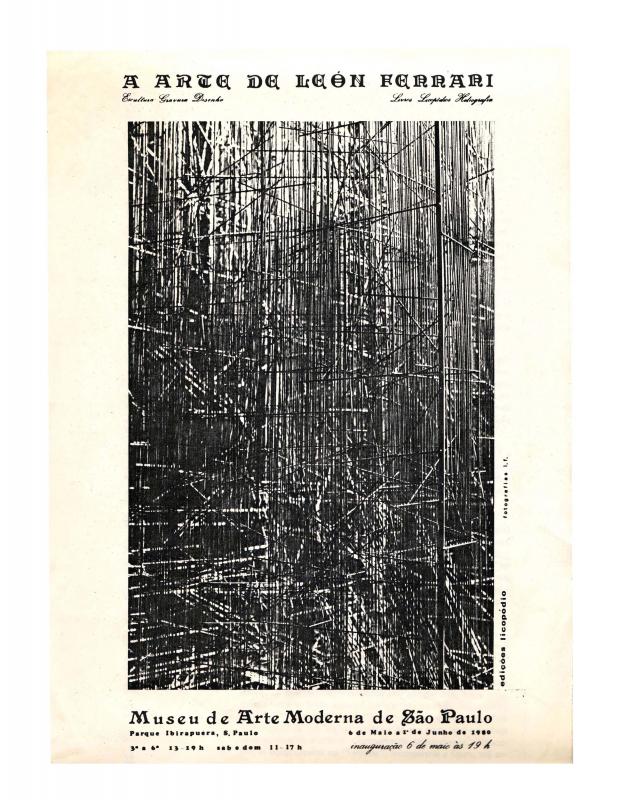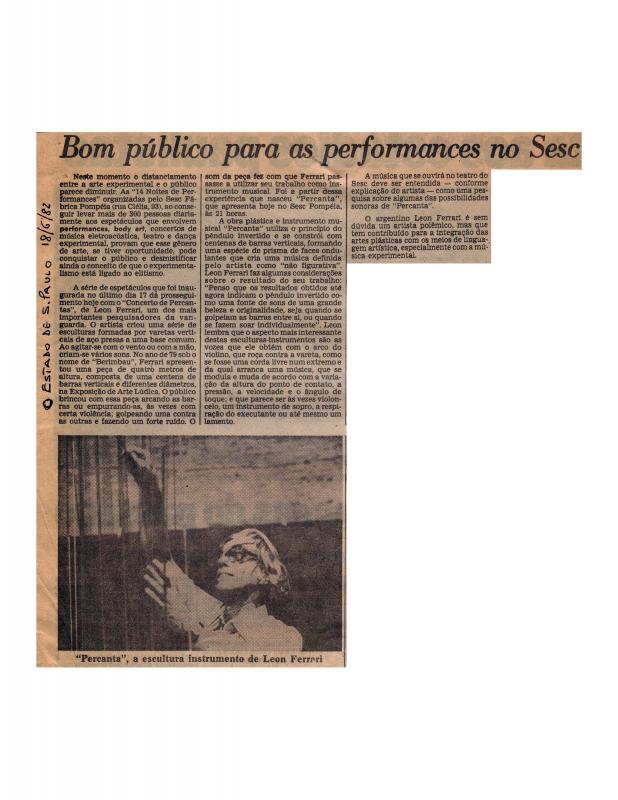León Ferrari (Buenos Aires, 1920–2013), son of the artist and architect Augusto César Ferrari, began later in life to dedicate himself to visual arts. This allowed him to serve as a bridge between the late-1950s artist generation and the young vanguard of the 1960s. His first works were ceramic sculptures; then, León experimented with wire structures, visual writing, and collages. What stood out from his work were two branches: a political line that strongly condemned military dictatorships, American imperialism, and Catholic Church ideology, as well as an Informalist approach to conceptual drawing or even within the Surrealist tradition. His 1965 object-montage, titled Civilización Occidental y Cristiana [Western Christian Civilization], was censured at the Centro de Artes Visuales del Instituto Torcuato Di Tella [the Torcuato Di Tella Institute’s Visual Arts Center] (see documents 743800, 744085, and 761879). Ferrari participated intensely in the 1960s events of political conceptualism (in particular, at the event Tucumán Arde [Tucumán Is Burning], 1968). In response to the most recent Argentine military dictatorship’s repressive regime (1975-83), he went into exile in Brazil, where he explored a variety of ideas, such as formalism and the reproducibility of a work, as well as the spatial relationship between sculpture and music (see documents 743960, 744392, and 743870, among others). Since 1984, he has exhibited again in Buenos Aires, where Ferrari again established himself definitely.
This document is relevant for taking into account the swift aesthetic changes occurred in the early-1960s Ferrari’s production. The aspect of ideological denunciation takes place in tandem with both wire sculptures and conceptual drawings that—to a certain extent—characterize his oeuvre.

